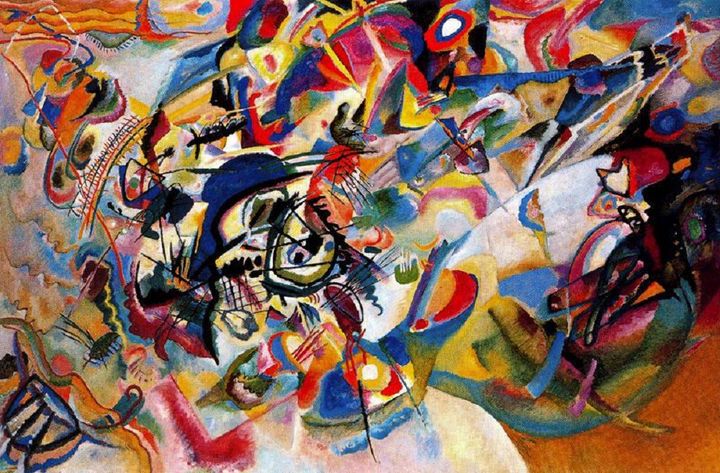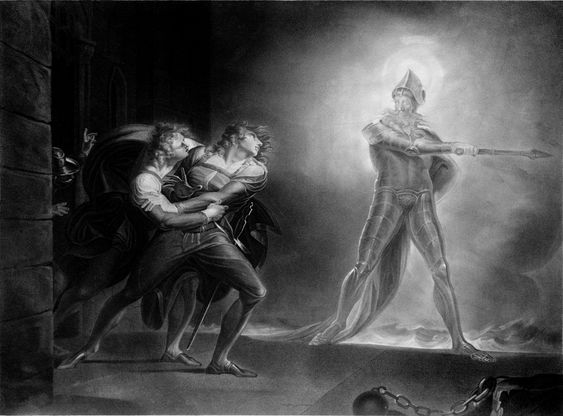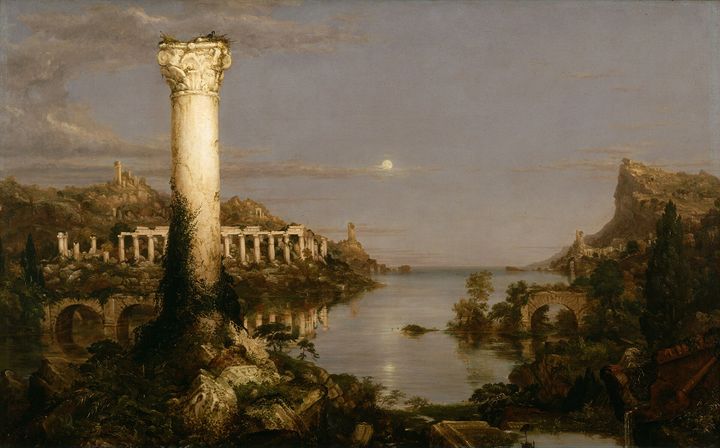The Hidden Meaning of Caravaggio's Masterpiece
"...There is wonder and the terrible purpose in Caravaggio’s masterpiece..."
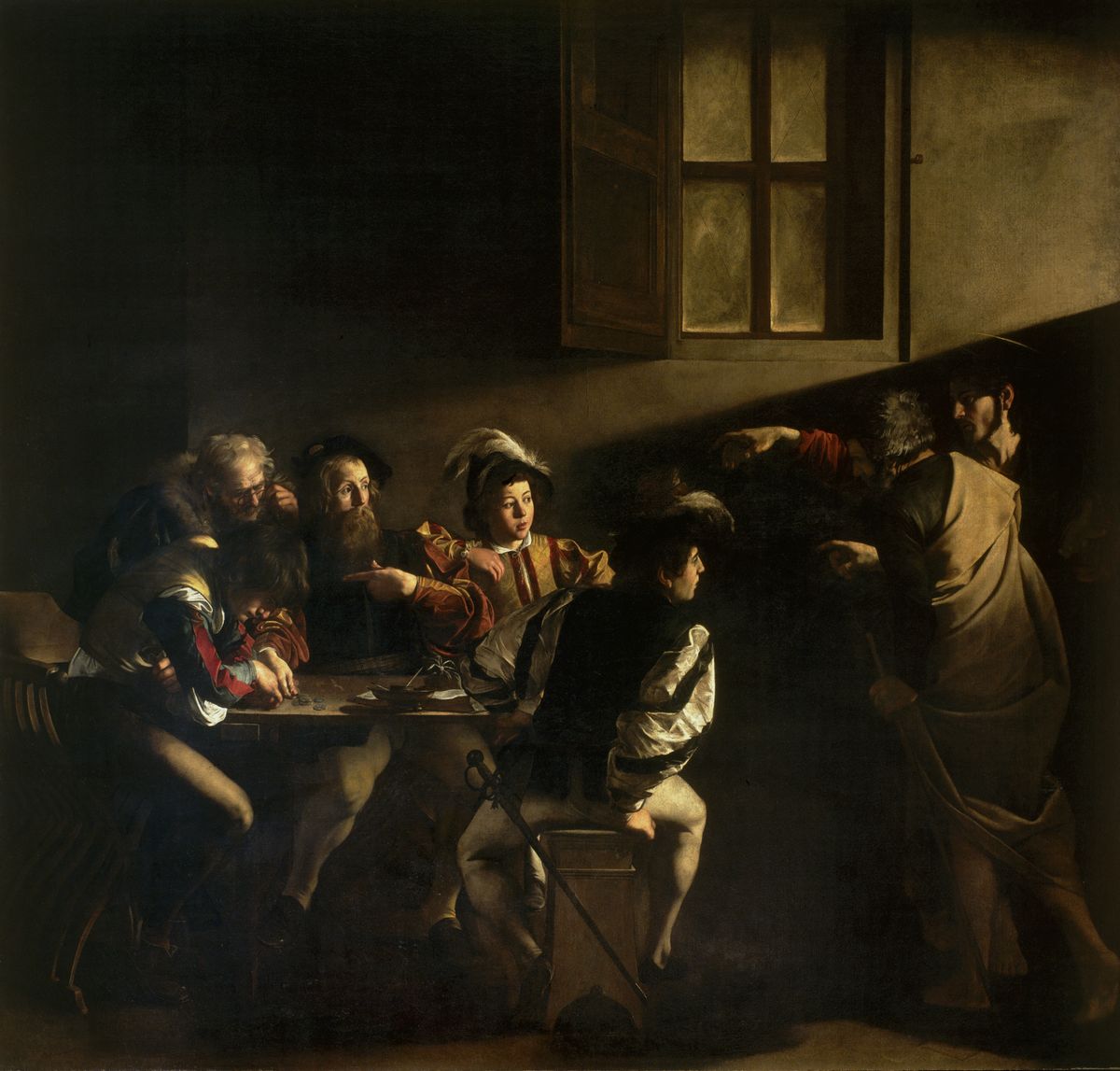
📩 If you have any questions, comments, or suggestions - please contact Guillermo Pablos Murphy on Tela:
tela.app/id/guillermo_pablos_murphy/621afa
🤝 Add Guillermo Pablos Murphy on LinkedIn:
linkedin.com/in/guillermo-pablos-murphy
🌎 How to join Tela Network:
tela.network/join
'The Calling of Saint Matthew' is an oil painting by Caravaggio that depicts Jesus Christ calling on the tax collector Matthew to follow him.
It’s a moment found in the Gospel of Matthew Chapter 9: Verse 9. It goes:
Jesus saw a man named Matthew at his seat in the custom house, and said to him, "Follow me", and Matthew rose and followed Him.
In his painting, Caravaggio depicts five men at a table, one of them being Matthew. Two figures, Jesus Christ and Saint Peter have entered the room from the right of the frame, and Jesus is pointing at Matthew. A beam of light illuminates the faces of those men looking at Jesus. This moment of spiritual awakening and conversion was a common theme among Baroque artists, especially in Caravaggio's work. The stark light – chiaroscuro, meaning ‘light and dark’ – is an iconic feature of Caravaggio’s paintings. Here the light symbolizes Matthew’s destiny beckoning him away from his dark present.
I want to focus on the most mysterious aspect of this painting: “Which of the figures is Matthew?”
There is debate over which of the five men at the table is Matthew, as the surprised gesture of the bearded man at the table can be read in two ways.
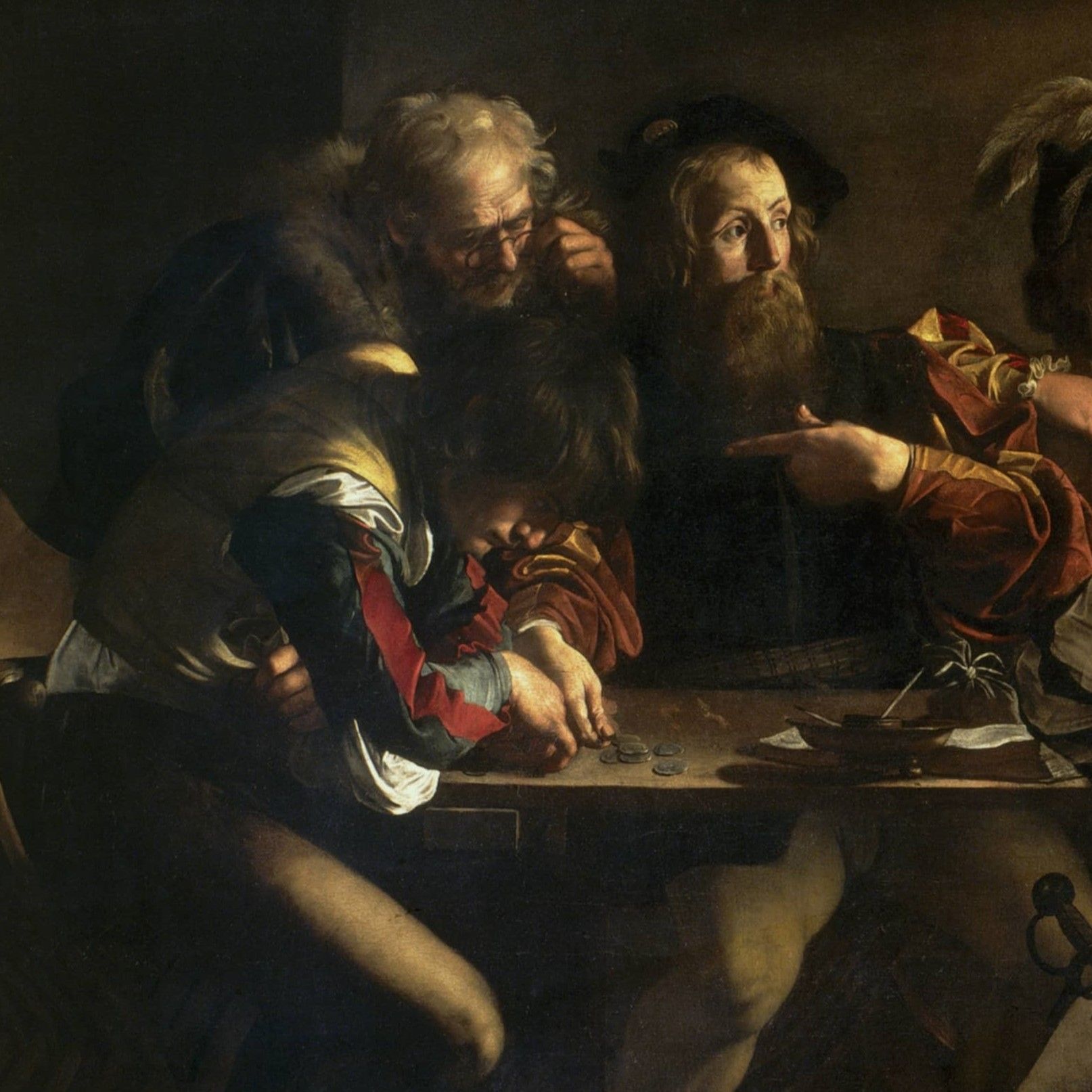
Most writers on the 'Calling' assume Matthew to be the bearded man, and see him to be pointing at himself, as if to ask "Me?" in response to Christ's summons. This theory is strengthened when one takes into consideration the other two works in this series, 'The Inspiration of Saint Matthew', and 'The Martyrdom of Saint Matthew' – these three paintings were part of the same commission. The bearded man appears in all three works, with him unequivocally playing the role of Matthew in both the 'Inspiration' and the 'Martyrdom'.
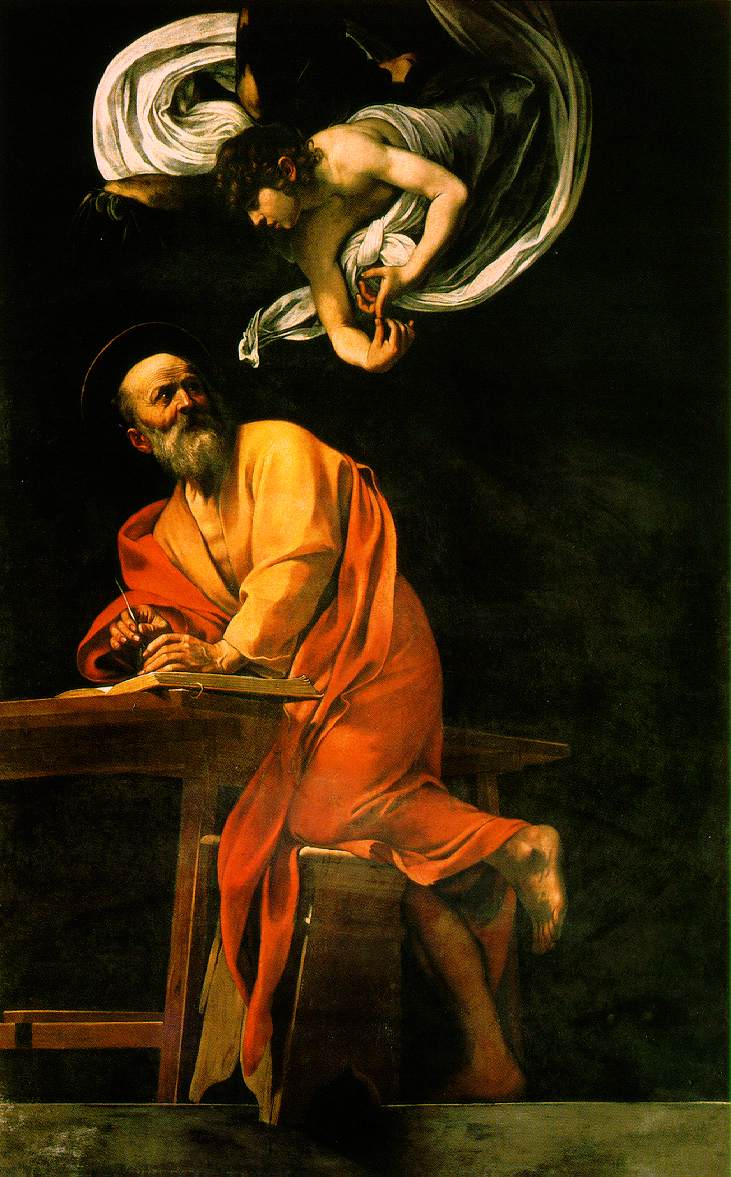
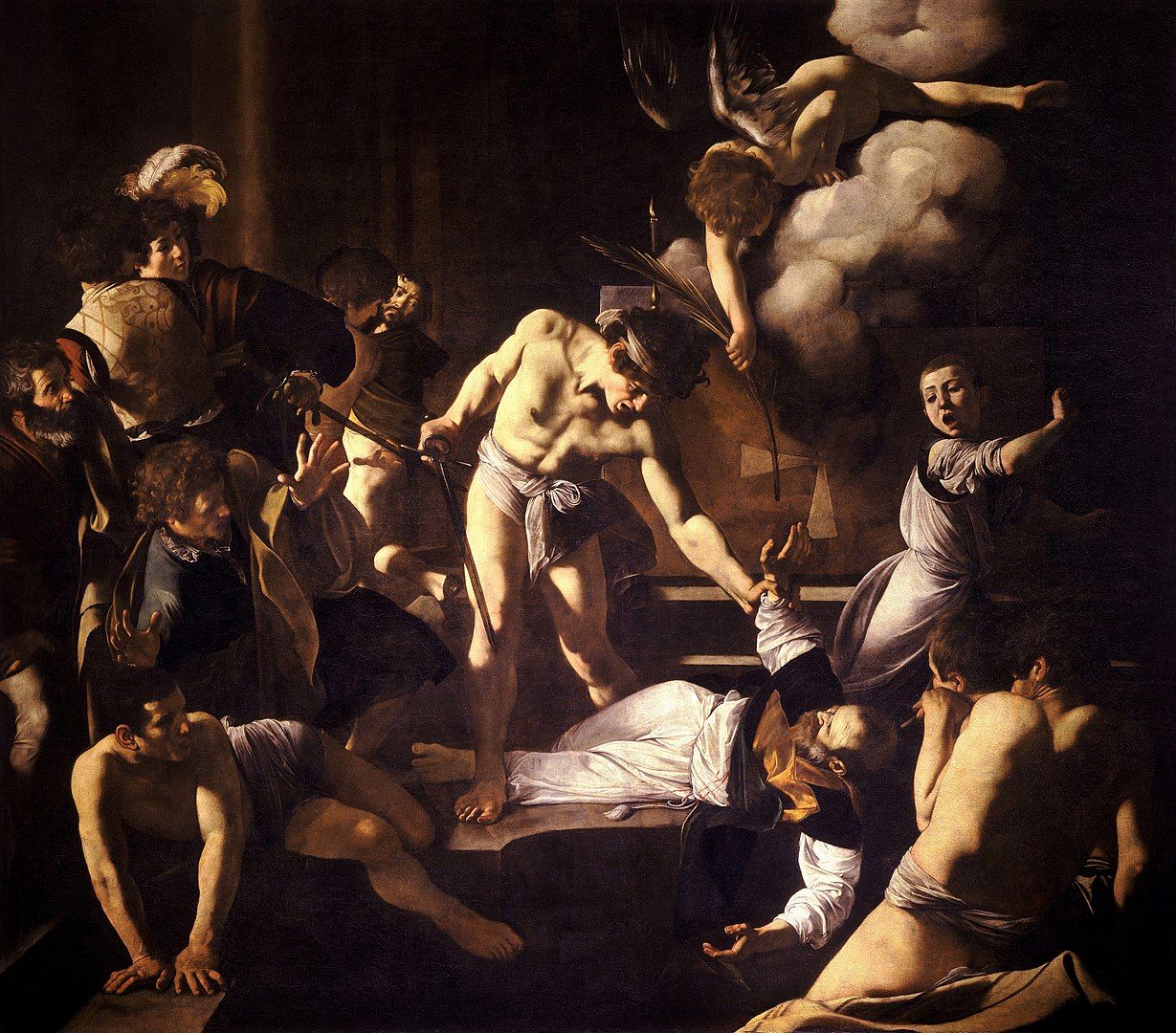
A more recent interpretation proposes that the bearded man is in fact pointing at the young man at the end of the table. In this reading, the bearded man is asking "Him?" in response to Christ's summons, and the painting is depicting the moment immediately before a young Matthew raises his head to see Christ. Other writers describe the painting as deliberately ambiguous.
For my part, I think it’s both.
I read the youth in the painting as Matthew. A young man consumed by the rigour of mindless work. Consider the figure’s pose – he’s hunched over the table at the edge of his seat, flicking through coins, one hand crossed over his chest fidgeting with his shirt, his eyes downcast, shadowed by a well-kept fringe, and hidden from the light of Christ. He’s bored, full of pent-up energy. I can almost hear the quick tapping of his heel on the floor beneath the table. He is a youth doomed to frustrated potential. We can easily envision the future of this life: It lies just behind his left shoulder. An old man in expensive clothes and well-kept facial hair, peering downwards through a pair of spectacles to better see the coins he has been counting for decades. Blind to the divine calling before him. Young Matthew is caged: See his folded arms, how he’s bent over in resignation and how the prison-like bars of his chair imitate that pose, and the man – his doom - leaning down over his shoulder. Young Matthew is a trapped and lonely figure resigned to his fate. A young Jew, counting taxes his people paid to a Roman governor. Bored, caged, trapped, and I’m sure, shunned.

Yet, I also read the bearded man as Matthew, specifically the Matthew of Caravaggio’s other paintings – the 'Inspiration' and 'Martyrdom'. This older Matthew is grown after decades of serving his destiny and looks back at his younger self in the moment just after he receives Christ’s summons. The moment just before his younger self raises his head and follows. I think it's “Him?” and “Me?”. Matthew is pointing back at who he was before and who he could’ve become if he had never followed that call and is looking forward at the light and He that called him.
We see a man recalling the moment he was called forward by destiny. The man considers who he was, a boy lost, consumed by the greed of an alien system, alone. In the older Matthew’s questioning gesture, we see how he still harbours disbelief at his destiny. We can imagine him whisper: “How could this lost youth be called by one such as you?”
Perhaps this is what the martyred Matthew, one hand raised towards sainthood and the angel that offers it, is reaching out towards with his other hand. Reaching back into memory, he holds out for his younger self. That young man; caged with his arms crossed, cold and shadowed from the light of Christ is now grown, and now faces death with open arms. One hand towards God and one hand towards his youth.
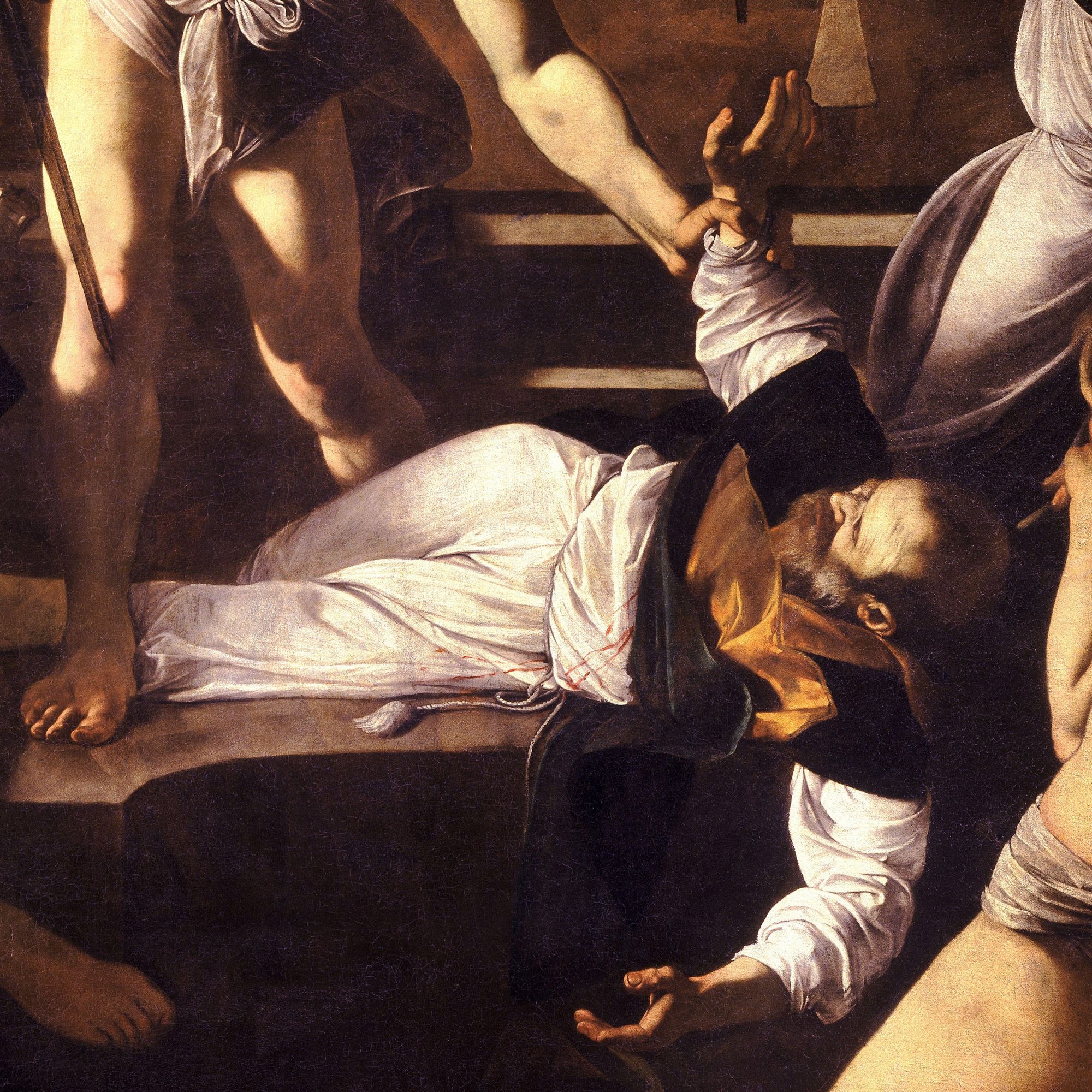
There is wonder and the terrible purpose in Caravaggio’s masterpiece painting and the other two that followed it. Yet, I glimpse hope for us toiling away at a wealth-less present. Hope for us awaiting a call.

📩 If you have any questions about Tela Network - please contact Guillermo Pablos Murphy:
tela.app/id/guillermo_pablos_murphy/621afa
☕️ Subscribe to the Tela Network Podcast:
youtube.com/@TelaNetworkPodcast
☕️ Follow Tela Network on LinkedIn:
linkedin.com/company/tela-network
☕️ Follow Tela Network on Twitter:
twitter.com/tela_updates
🔔 Join the Tela Social channel on Telegram to get every new update:
t.me/tela_social
📸 Follow Tela Network on Instagram:
instagram.com/tela_updates
💹 Invest in Tela:
tela.network/invest
